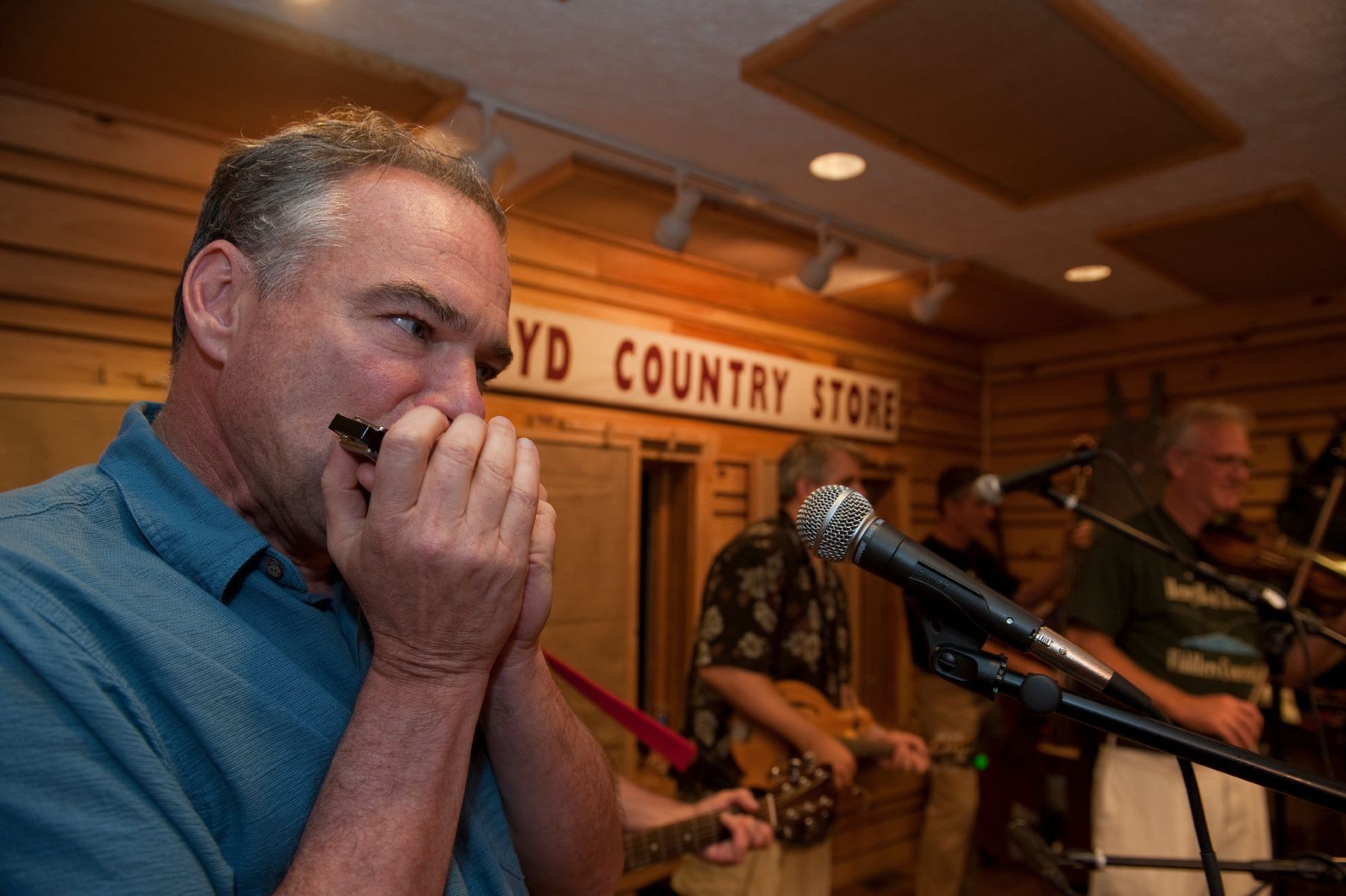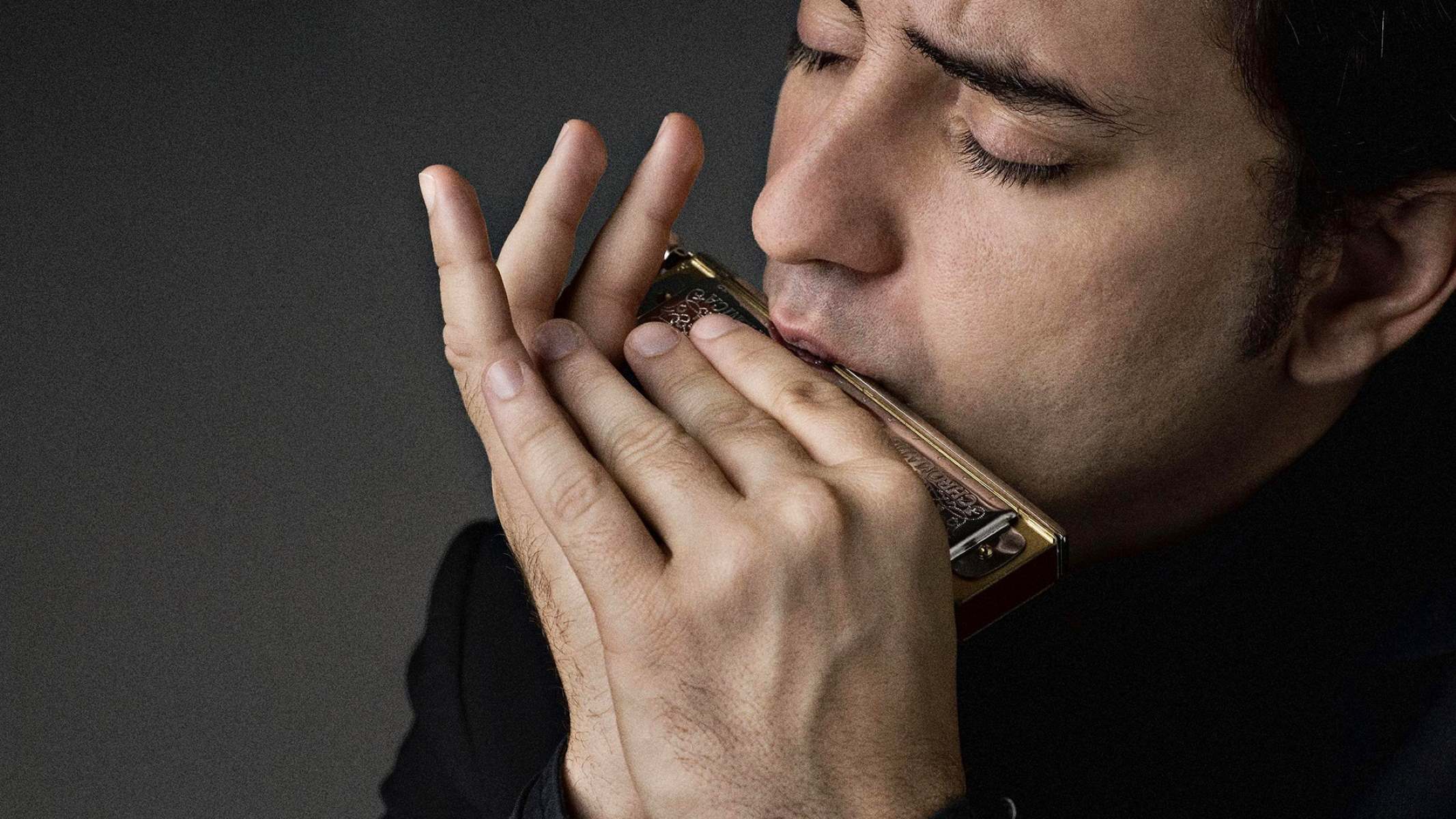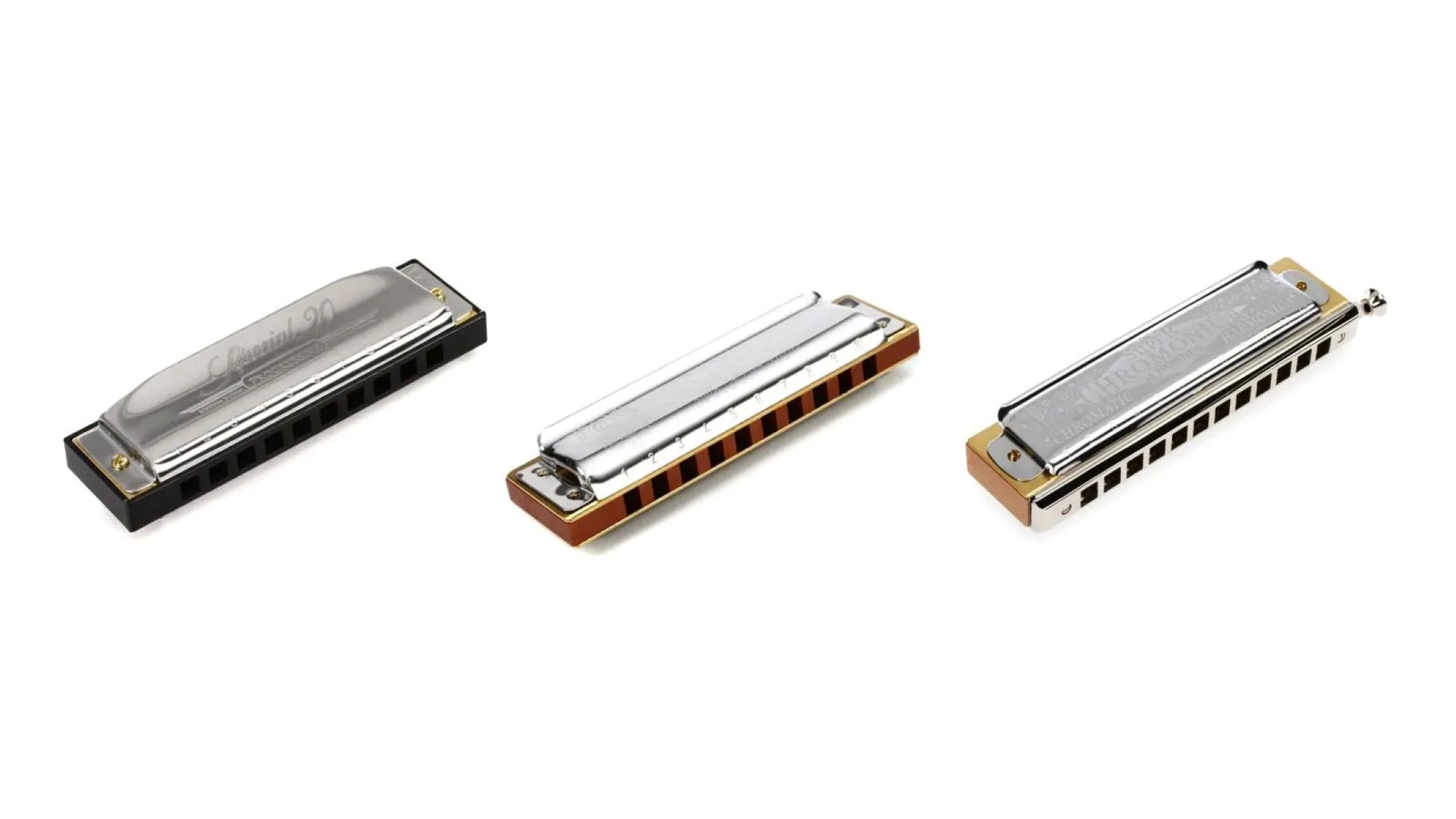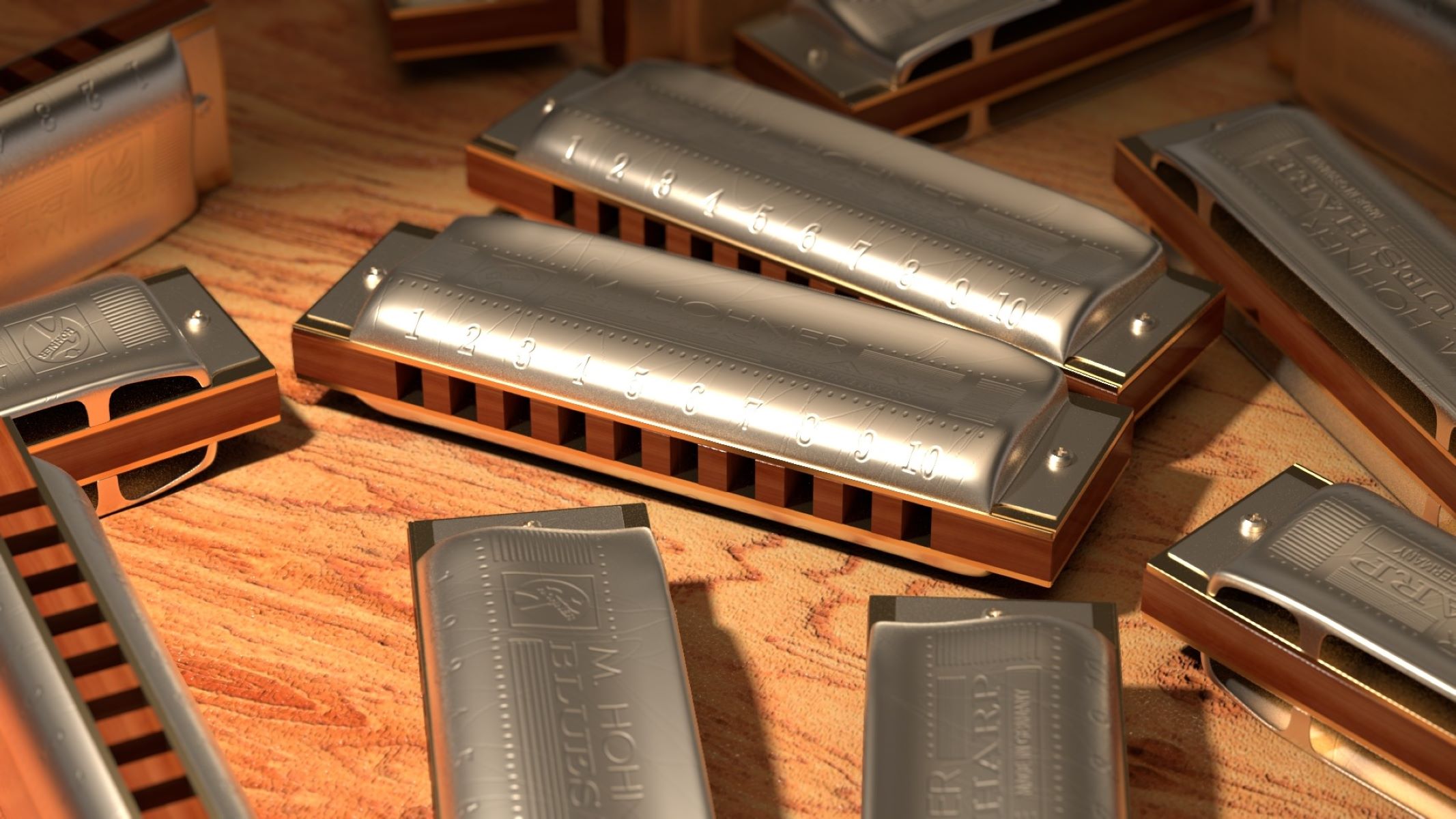Home>Instruments>Harmonica>How To Blow Into Harmonica


Harmonica
How To Blow Into Harmonica
Modified: February 3, 2024
Learn the proper technique and tips on how to blow into a harmonica, and unlock new musical possibilities with this versatile instrument. Master the harmonica now!
(Many of the links in this article redirect to a specific reviewed product. Your purchase of these products through affiliate links helps to generate commission for AudioLover.com, at no extra cost. Learn more)
Table of Contents
Introduction
Welcome to the exciting world of harmonica playing! The harmonica, also known as the mouth organ or harp, is a versatile and soulful musical instrument that has been captivating audiences for centuries. Whether you’re a beginner or an experienced player looking to expand your skills, this comprehensive guide will provide you with valuable insights and techniques to help you master the harmonica.
With its compact size and simple design, the harmonica is accessible to anyone eager to learn. It’s a popular choice for both accomplished musicians and those seeking a portable and easy-to-learn instrument. From blues and folk to rock and jazz, the harmonica is an integral part of various musical genres, adding richness and depth to compositions.
In this guide, we will cover everything you need to know to get started with harmonica playing. We’ll begin by helping you choose the right harmonica for your needs and explain the different types available. Then, we’ll delve into the proper technique for holding the harmonica and positioning your mouth to achieve the best sound.
We’ll explore basic notes and chords, providing you with a strong foundation to build upon. You’ll also learn beginner exercises for breath control, which is crucial for playing the harmonica effectively. As you progress, we’ll delve into various techniques for different styles of harmonica playing, such as bending notes, tongue blocking, and vibrato.
To help you improve your overall tone and sound quality, we’ll share valuable tips specific to harmonica playing. From adjusting your embouchure to understanding different mic placements, these tips will elevate your playing to new heights. Additionally, we’ll cover common harmonica techniques and effects, such as overblowing and wah-wah playing, to further expand your repertoire.
Whether you aspire to play beautiful melodies, soulful blues, or lively folk tunes, this guide will equip you with the knowledge and skills to achieve your musical goals. So grab your harmonica, get ready to blow, and let’s embark on a harmonious journey together!
Choosing the Right Harmonica
When it comes to choosing a harmonica, there are several factors to consider to ensure you find the right one for your playing style and preferences. Here are some key points to keep in mind:
- Determine the Key: Harmonicas are available in different keys, such as C, G, and A. The key of the harmonica determines the overall tone and range of notes it can produce. The most commonly used key for beginners is C, as it is versatile and widely used in many music genres.
- Select the Type of Harmonica: Harmonicas come in different types, including diatonic, chromatic, and tremolo. Diatonic harmonicas are the most common and are great for playing melodies and blues. Chromatic harmonicas have a button to produce sharps and flats, allowing for more complex melodies. Tremolo harmonicas produce a unique tremolo effect and are often used in folk music.
- Consider the Construction: Harmonicas can be made with different materials, such as plastic, wood, or metal. Plastic harmonicas are affordable and durable, making them a popular choice for beginners. Wood harmonicas offer a warm tone, while metal harmonicas are known for their bright and crisp sound.
- Check the Quality: It’s essential to choose a harmonica from a reputable brand to ensure good quality and longevity. Brands like Hohner, Lee Oskar, and Seydel are known for producing high-quality harmonicas that deliver excellent sound and durability.
- Try Before You Buy: If possible, try out different harmonicas before making a purchase. This allows you to test the sound, feel, and playability of the instrument and determine if it suits your style and comfort.
Remember, choosing the right harmonica is a personal decision based on your preferences and musical goals. It’s worth investing time and effort into researching and testing different options to find the harmonica that resonates with you.
Proper Technique for Holding the Harmonica
Mastering the proper technique for holding the harmonica is crucial for achieving a clear and resonant sound. Here are some key tips to help you hold the harmonica correctly:
- Use Your Hands: Start by cupping your hands around the harmonica, with your palms facing upward. Your left hand should hold the harmonica from below, while your right hand supports it from the top. Both hands should hold the harmonica gently but securely, allowing for ease of movement.
- Avoid Covering Holes: Make sure that your hands do not cover the holes on the harmonica. This is essential for allowing the sound to resonate freely and preventing any muffled or blocked notes.
- Position and Angle: Hold the harmonica diagonally across your mouth, with the lower end pointing slightly upward. This positioning allows for proper airflow and helps you reach all the holes with ease. Experiment with the angle to find what feels most comfortable and produces the best sound.
- Breathe Through Your Nose: When playing the harmonica, it is important to breathe through your nose rather than your mouth. This allows for smooth and uninterrupted airflow, ensuring clear and sustained notes.
- Relax Your Jaw: Keep your jaw and facial muscles relaxed while playing the harmonica. Tension in your jaw can affect your playing technique and limit your ability to produce nuanced and expressive sounds.
- Use Proper Lip Seal: Create a tight seal around the harmonica with your lips to prevent any air leakage. This seal enables you to control the notes more effectively and produce a focused and vibrant sound.
- Practice Stability: Work on maintaining a stable hand and mouth position while playing. Avoid excessive movement or repositioning of the harmonica, as it can disrupt your playing and cause inconsistent sound production.
Remember that mastering the proper technique for holding the harmonica takes time and practice. Be patient with yourself and place importance on developing a comfortable and efficient hand and mouth position. With dedication and perseverance, you’ll soon be able to play the harmonica with confidence and skill.
Correct Mouth Positioning
The positioning of your mouth is a crucial element in playing the harmonica effectively. By adopting the correct mouth position, you’ll be able to achieve clear and resonant notes. Here are some important guidelines to follow:
- Covering Multiple Holes: When playing a single note on the harmonica, position your mouth in such a way that your lips cover only the specific hole you intend to play. This allows for precise control and prevents unintentionally sounding multiple holes at once.
- Tilt Your Head Back: To ensure a clear sound, tilt your head slightly back while playing the harmonica. This helps to create a direct airflow into the harmonica, resulting in better tonal quality and projection.
- Relaxed Tongue: Keep your tongue relaxed and flat inside your mouth, resting against the bottom of your lower front teeth. This allows for unrestricted airflow and helps prevent accidental blocking of the holes or impeding the sound production.
- Tongue Blocking: Tongue blocking is a technique often used in harmonica playing, particularly for achieving chordal and chordal-style playing. To employ this technique, slightly raise the tip of your tongue to block some of the holes while leaving the desired holes open for playing.
- Pucker Technique: The pucker technique is another commonly used method for playing single notes. To use this technique, rounded your lips as if you were about to whistle or kiss, and place them directly on the harmonica. This creates a tight seal and allows for focused airflow into the designated hole.
- Experiment with Mouth Shape: Different mouth shapes can produce varying tones on the harmonica. For instance, widening your mouth can create a deeper tone, while narrowing it can result in a brighter sound. Experiment with different mouth shapes to discover the range of tones you can produce.
It’s important to note that finding the optimal mouth positioning may require some experimentation and adjustment based on your harmonica, playing style, and personal preference. Take the time to explore different techniques and mouth positions to find what works best for you and produces the desired sound. With practice and patience, you’ll develop a natural and comfortable mouth position that enhances your harmonica playing skills.
Basic Notes and Chords
Understanding the basic notes and chords on the harmonica is essential for creating melodies and playing along with songs. The harmonica is a versatile instrument capable of producing a wide range of musical tones. Here’s an overview of the basic notes and chords:
The harmonica is designed with multiple holes, each corresponding to a specific note. When you blow air into the harmonica, you produce different pitches based on the hole you cover with your mouth. The numbers on the harmonica indicate the hole number, with the lowest pitched hole typically numbered 1.
The harmonica notes follow a specific pattern: the bottom row of holes creates the tonic notes of a key, while the top row produces the corresponding chord notes. This pattern repeats as you move from left to right on the harmonica.
As a beginner, it’s helpful to focus on playing single notes before exploring chords. Here are some basic notes to get you started:
- Blow Notes: Blow through a hole without any tongue blocking to play the tonic note. Begin with hole 4, as it produces the middle C note, which is often the starting point for beginners.
- Draw Notes: Draw or inhale through a hole to produce a different set of notes. These notes are typically higher in pitch and are indicated by a negative sign (-) next to the hole number.
- Bending Notes: Bending notes involves changing the pitch of a single note by altering the airflow and mouth shape. This technique adds expressiveness and allows for more nuanced playing. Experiment with bending notes on different holes to create embellishments and add depth to your playing.
Moving on to chords, harmonicas are excellent instruments for playing chords, particularly diatonic harmonicas. By combining multiple notes, you can produce rich and harmonic sounds. Here are a few basic chords to explore:
- Major Chords: Major chords are the most common and provide a bright and uplifting sound. To play a major chord, simply blow through the corresponding holes of a single row.
- Minor Chords: Minor chords create a more somber and melancholic sound. To play a minor chord, draw through the holes of a single row.
- Seventh Chords: Seventh chords add a bluesy and soulful touch to your playing. They are achieved by combining specific blow and draw notes, typically forming a four-note chord.
Practice playing individual notes and chords by following harmonica tablature or sheet music. With time and practice, you’ll develop the muscle memory and understanding of the basic notes and chords, allowing you to play melodies and accompany songs with ease.
Beginner Exercises for Breath Control
Breath control is a fundamental skill for harmonica players. It allows you to maintain a steady airflow, control dynamics, and play with expression. As a beginner, focusing on breath control exercises will help you develop strength, control, and stamina. Here are some exercises to improve your breath control:
- Single Note Holding: Start by playing a single note on the harmonica and hold it for as long as possible. Focus on maintaining a consistent and steady airflow without any breaks or fluctuations. This exercise helps build up your lung capacity and control over your breath.
- Alternate Blowing and Drawing: Practicing alternating between blowing and drawing on the harmonica helps develop balanced breath control. Start by blowing one note, then draw another, and continue alternating between the two. This exercise helps you become comfortable with both inhaling and exhaling while playing.
- Sustained Notes: Select a note and aim to sustain it for an extended period. You can use a metronome or a timer to keep track of how long you can hold the note without running out of breath. Gradually increase the duration as you build up your lung capacity and breath control.
- Tongue Blocking Exercises: Practicing tongue blocking techniques helps enhance breath control and tone production. Start by blocking one hole with your tongue while blowing or drawing through the other holes. This exercise strengthens your tongue and helps you control the airflow to produce individual notes or chords.
- Dynamic Control: Work on varying the intensity and volume of your playing. Practice playing softly and gradually increase the volume, then decrease it again. This exercise helps develop dynamic control and the ability to provide expressive variations in your harmonica playing.
- Rhythmic Breathing: Choose a simple rhythmic pattern and try playing along with it using your harmonica. Focus on coordinating your breaths with the rhythm, ensuring that your playing remains steady and in sync with the beat. This exercise improves your timing and breath control in a musical context.
Remember to take breaks and rest when needed during your practice sessions. Over time, you will notice significant improvement in your breath control, allowing you to play with confidence, expressiveness, and a strong command of the harmonica.
Techniques for Different Types of Harmonica Playing
The harmonica is a versatile instrument that lends itself to various playing styles and techniques. Depending on the genre and sound you want to achieve, different techniques can be employed. Here are some techniques for different types of harmonica playing:
- Single Note Playing: Mastering the skill of playing single notes is essential for clear and precise melodies. By placing your mouth over one hole at a time and controlling your airflow, you can produce distinct and well-defined notes. Practice playing scales, melodies, and simple songs using single notes.
- Bending Notes: Bending notes is a technique used to alter the pitch of a note, adding expressiveness and emotion to your playing. By manipulating your embouchure and tongue position, you can lower the pitch of a note to create a bluesy or soulful effect. Spend time practicing bending notes on different holes and experimenting with different bending techniques.
- Tongue Blocking: Tongue blocking is a technique commonly used in blues and folk music. By blocking certain holes with your tongue while allowing air to escape through other holes, you can produce chords, intervals, and melodic variations. Practice tongue blocking exercises to improve your coordination and achieve a fuller, more dynamic sound.
- Overblowing and Overdrawing: Overblowing and overdrawing are advanced techniques that allow you to play additional notes beyond the standard range of the harmonica. These techniques involve shaping your embouchure and adjusting your airflow to produce higher-pitched notes or chromatic tones. They are commonly used in jazz and experimental music.
- Vibrato: Vibrato is a technique that adds a pulsating effect to your playing, enhancing the expressiveness of the harmonica. It involves slightly fluctuating the pitch of a note by varying your embouchure or using your throat muscles. Experiment with different approaches to achieve a smooth and controlled vibrato.
- Chromatic Playing: Chromatic harmonicas are specifically designed to play all 12 notes of the Western musical scale, including sharps and flats. This allows for more versatility and enables you to play melodies in different keys. Practice scales, arpeggios, and chromatic exercises to familiarize yourself with the layout of the chromatic harmonica.
- Tremolo Playing: Tremolo harmonicas have double holes for each note, which creates a unique tremolo effect. By playing two holes simultaneously, you produce a wavering sound that adds depth and texture to your playing. Experiment with tremolo techniques and incorporate them into folk or traditional music styles.
It’s important to remember that mastering these techniques takes time, patience, and consistent practice. Start with the fundamentals and gradually progress to more advanced techniques as you become comfortable and proficient. With dedication and exploration, you’ll be able to utilize these techniques to create your own unique harmonica style and sound.
Tips for Improving Harmonica Tone
Producing a rich and resonant tone is a key goal for harmonica players. A well-controlled and beautiful tone can greatly enhance your playing and captivate your audience. Here are some tips to help you improve your harmonica tone:
- Proper Mouth Positioning: Ensure that your mouth is positioned correctly around the harmonica’s holes. Experiment with different angles and mouth shapes to find the position that allows for optimal airflow and tone production.
- Relaxed Jaw and Facial Muscles: Tension in your jaw and facial muscles can adversely affect your tone. Keep your jaw and facial muscles relaxed while playing, allowing for a free and unrestricted airflow.
- Breath Control: Develop your breath control skills to achieve consistent airflow and steady notes. Practice exercises specifically designed to improve your breath control, such as long note holding and alternate blowing and drawing.
- Play with Confidence: Confidence plays a significant role in your tone production. Play each note with conviction and a sense of purpose. The energy and confidence you bring to your playing will shine through in your tone.
- Utilize Proper Tongue Blocking: When using tongue blocking techniques, ensure that you’re blocking the intended holes while allowing air to escape smoothly from the open holes. This will help you achieve a clean and focused tone without any unintended leakage or muffled sounds.
- Experiment with Mic Placement: If you’re using a microphone, experiment with different microphone placements to find the sweet spot that captures the best harmonica sound. Adjusting the distance and angle of the microphone can greatly impact the tone and capture the nuances of your playing.
- Practice Dynamic Control: Dynamic control involves varying the volume and intensity of your playing. Experiment with playing softly for subtle and intimate moments, and then gradually increase the volume to create powerful and expressive passages. This control over dynamics adds depth and emotion to your tone.
- Focus on Intonation: Pay close attention to intonation, which refers to the accuracy of your pitch. Aim to play each note precisely and in tune. Practice playing along with a tuner or a reference pitch to develop your ear for intonation.
- Regular Maintenance and Cleaning: Keep your harmonica clean and properly maintained to ensure optimal tone. Regularly clean the instrument, replace reeds if necessary, and store it in a protective case when not in use. A well-maintained harmonica will produce a better tone.
- Listen and Learn from Other Players: Listen to recordings of skilled harmonica players across different genres. Pay attention to their tone and techniques. Study their phrasing, articulation, and tone production, and incorporate those insights into your own playing.
Remember, developing a rich and pleasing harmonica tone takes time and consistent practice. Be patient with yourself and focus on incorporating these tips into your playing routine. Over time, you’ll notice a significant improvement in your tone, allowing you to express yourself more fully through the harmonica.
Common Harmonica Techniques and Effects
The harmonica is known for its expressive and versatile nature, and there are numerous techniques and effects that can be employed to enhance your playing. Here are some common harmonica techniques and effects to explore:
- Bending: Bending notes involves manipulating your embouchure and tongue position to alter the pitch of a note. It adds a bluesy, soulful quality to your playing and allows for greater musical expression.
- Tongue Blocking: Tongue blocking is a technique where you place your tongue against specific holes to create chords or play single notes. It enhances the ability to achieve a full, resonant tone and perform chords and double stops.
- Trills: Trills involve rapidly alternating between two adjacent notes. This technique adds a fluttering, vibrant texture to your playing and can be used to add embellishments and variations to your melodies.
- Overblows and Overdraws: Overblows and overdraws expand the range of the harmonica by producing additional notes not found in the standard diatonic scale. They require precise control of your breath and embouchure to achieve the desired pitch.
- Chromatic Playing: Chromatic harmonicas, equipped with a button or slide, allow you to play all the notes of the chromatic scale. This technique enables you to perform complex melodies and achieve a broader range of musical possibilities.
- Cupping and Hand Effects: By cupping your hands around the harmonica or using hand effects like wah-wah and flutter tongue, you can modify the tone and create unique sound effects. Experiment with different cupping techniques and hand movements to produce various textures and colors in your playing.
- Tremolo: Tremolo is a technique used with tremolo harmonicas, which have double holes for each note. Playing both holes simultaneously creates a wavering, warbling effect that adds depth and character to your melodies.
- Articulation: Articulation refers to the way you attack and release each note. Techniques like tongue slaps, tongue stops, tongue switches, and tongue flicks allow you to articulate the notes with precision and clarity.
- Cross Harp/Rhythm Playing: Cross harp, also known as second position, is a popular playing style used in blues and rock music. It involves playing the harmonica in a key different from the key of the song, creating a distinctive bluesy sound. Rhythm playing techniques, such as chugging and percussive strumming, add rhythmic interest and drive to your playing.
- Buzzing: Buzzing is a technique used to create a buzzing, growling sound. It involves forcefully inhaling or exhaling while partially blocking the airflow with your tongue or throat. Buzzing adds a unique and gritty texture to your playing.
Each of these techniques and effects brings its own flavor and character to your harmonica playing. Experiment with them, listen to skilled harmonica players, and practice regularly to master these techniques and incorporate them into your musical repertoire. They’ll open up new possibilities and add depth to your harmonica playing journey.
Conclusion
Congratulations on taking the first steps to explore and master the harmonica! Throughout this comprehensive guide, we’ve covered various aspects of harmonica playing, from choosing the right harmonica to exploring different techniques and effects.
Remember, playing the harmonica is a journey that requires patience, practice, and a deep connection with the instrument. As you continue to develop your skills, here are some key takeaways to keep in mind:
Firstly, focus on the fundamentals. Start with proper technique, including holding the harmonica correctly and positioning your mouth for optimal sound production. Practice breath control exercises to develop control and stamina.
Move on to mastering basic notes and chords, gradually progressing to more advanced techniques such as bending, tongue blocking, and vibrato. With time and dedication, you’ll be able to incorporate these techniques into your playing and create a unique harmonica style.
Take advantage of the wide range of harmonicas available, such as diatonic, chromatic, and tremolo, to explore different musical genres and tones. Each type of harmonica offers unique possibilities for expression.
As you grow as a harmonica player, don’t forget to focus on your tone. Experiment with microphone placement, maintain your harmonica properly, and practice dynamic control to produce a beautiful and resonant sound.
Lastly, listen to and learn from other harmonica players across various genres. Draw inspiration from their phrasing, articulation, and musicality to further develop your own playing style.
Remember, harmonica playing is a lifelong journey of learning and evolving. Embrace the joy and satisfaction of creating music with this versatile and soulful instrument. With passion, dedication, and the techniques you’ve learned, you’ll continue to grow as a harmonica player and delight yourself and others with your music.











